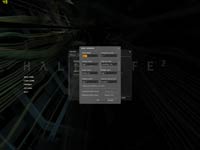
Half-Life 2
Publisher: Valve SoftwareWe are using the full retail version of Half-Life 2 with the latest patch downloaded and installed via the steam network. We did a manual run through from a section of City 17 in the "Follow Freeman!" Chapter for the purposes of our comparison. As a backup to verify that the settings were playable, we used a section of "Water Hazard" to determine that the chosen settings were playable when water was being rendered to screen; however, a frame rate was not recorded for this section of the title - it was merely a loop back to ensure that our settings were playable in the most graphic-intense parts of the game.
Anti-Aliasing and Anisotropic Filtering were controlled from inside the game, and thus the drivers were left set to "Application Controlled".
Half-Life 2 is a very CPU dependant title, despite its release date being reasonably late last year. Thus, the speed of your CPU will have a great affect on the frame rates that you record during the title. Our manual run through is the most intensive section of the game, and it shows both CPU and GPU limitations.
Below is a table of the best-playable settings that we found best for each video card configuration. In this title, we found that 25 to 30 frames per second minimum and a target of 55 frames per second (or higher) for the average frame rate delivered smooth and fluid game play.

You could argue that the image quality on ATI's Radeon X700 Pro was slightly better with their gamma adjusted Anti-Aliasing method, but the differences are small and we feel that they are only really noticeable if you have two monitors side by side with the different video cards installed for comparison.

MSI MPG Velox 100R Chassis Review
October 14 2021 | 15:04






Want to comment? Please log in.